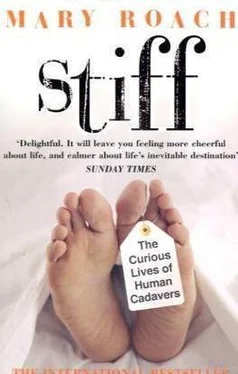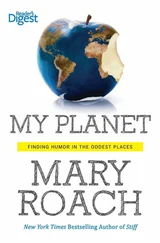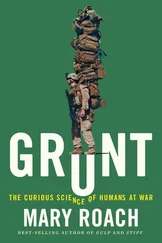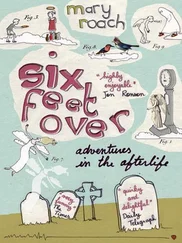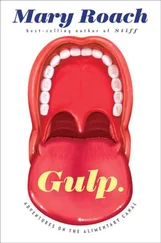Funeral homes sell sealed vaults designed to keep air and water out, but even then, the corpse’s prospects for eternal comeliness are iffy. The body may contain bacteria spores, hardy suspended-animation DNA pods, able to withstand extremes of temperature, dryness, and chemical abuse, including that of embalming. Eventually the formaldehyde breaks down, and the coast is clear for the spores to bring forth bacteria.
“Undertakers used to claim embalming was permanent,” says Mack. “If it meant making the sale on that family, believe me, that embalmer was going to say anything,” agrees Thomas Chambers, of the W. W. Chambers chain of funeral homes, whose grandfather walked the boundaries of taste when he distributed promotional calendars featuring a nude silhouette of a shapely woman above the mortuary’s slogan, “Beautiful Bodies by Chambers.” (The woman was not, as Jessica Mitford seemed to hint in The American Way of Death , a cadaver that the mortuary had embalmed; that would have been going too far, even for Grandpa Chambers.)
Embalming fluid companies used to encourage experimentation by sponsoring best-preserved-body contests. The hope was that some undertaker, by craft or serendipity, would figure out the perfect balance of preservatives and hydrators, enabling his trade to preserve a body for years without mummifying it. Contestants were invited to submit photographs of decedents who had held up particularly well, along with a write-up of their formulas and methods. The winning entries and photos would be published in mortuary trade journals, on the pre-Jessica Mitford assumption that no one outside the business ever cracked an issue of Casket and Sunnyside .
I asked Mack what made the undertakers back off from their claims of eternal preservation. It was, as it so often is, a lawsuit. “One man took them up on it. He bought a space in a mausoleum and every six months he’d go in with his lunch and open up his mother’s casket and visit with her on his lunch hour. One especially wet spring, some moisture got in, and come to find, Mom had grown a beard. She was covered with mold.
He sued, and collected twenty-five thousand dollars from the mortuary.
So they’ve stopped making that statement.” Further discouragement has come from the Federal Trade Commission, whose 1982 Funeral Rule prohibited mortuary professionals from claiming that the coffins they sold provided eternal protection against decay.
And that is embalming. It will make a good-looking corpse of you for your funeral, but it will not keep you from one day dissolving and reeking, from becoming a Halloween ghoul. It is a temporary preservative, like the nitrites in your sausages. Eventually any meat, regardless of what you do to it, will wither and go off.
The point is that no matter what you choose to do with your body when you die, it won’t, ultimately, be very appealing. If you are inclined to donate yourself to science, you should not let images of dissection or dismemberment put you off. They are no more or less gruesome, in my opinion, than ordinary decay or the sewing shut of your jaws via your nostrils for a funeral viewing. Even cremation, when you get right down to it—as W.E.D. Evans, former Senior Lecturer in Morbid Anatomy at the University of London, did in his 1963 book The Chemistry of Death —isn’t a pretty event:
The skin and hair at once scorch, char and burn. Heat coagulation of muscle protein may become evident at this stage, causing the muscles slowly to contract, and there may be a steady divarication of the thighs with gradually developing flexion of the limbs. There is a popular idea that early in the cremation process the heat causes the trunk to flex forwards violently so that the body suddenly “sits up,” bursting open the lid of the coffin, but this has not been observed personally….
Occasionally there is swelling of the abdomen before the skin and abdominal muscles char and split; the swelling is due to formation of steam and the expansion of gases in the abdominal contents.
Destruction of the soft tissues gradually exposes parts of the skeleton. The skull is soon devoid of covering, then the bones of the limbs appear…. The abdominal contents burn fairly slowly, and the lungs more slowly still. It has been observed that the brain is specially resistant to complete combustion during cremation of the body. Even when the vault of the skull has broken and fallen away, the brain has been seen as a dark, fused mass with a rather sticky consistency…. Eventually the spine becomes visible as the viscera disappear, the bones glow whitely in the flames and the skeleton falls apart.
Drops of sweat bead the inside surface of Nicole’s splash shield. We’ve been here more than an hour. It’s almost over. Theo looks at Mack. “Will we be suturing the anus?” He turns to me. “Otherwise leakage can wick into the funeral clothing and it’s an awful mess.”
I don’t mind Theo’s matter-of-factness. Life contains these things: leakage and wickage and discharge, pus and snot and slime and gleet. We are biology. We are reminded of this at the beginning and the end, at birth and at death. In between we do what we can to forget.
Since our decedent will not be having a funeral service, it is up to Mack whether the students must take the final step. He decides to let it go.
Unless the visitor wishes to see it. They look at me.
“No thank you.” Enough biology for today.
4. DEAD MAN DRIVING
Human Crash Test Dummies and the Ghastly Necessary Science of Impact Tolerance

By and large, the dead aren’t very talented. They can’t play water polo, or lace up their boots, or maximize market share. They can’t tell a joke, and they can’t dance for beans. There is one thing dead people excel at.
They’re very good at handling pain.
For instance, UM 006. UM 006 is a cadaver who recently journeyed across Detroit from the University of Michigan to the bioengineering building at Wayne State University. His job, which he will undertake at approximately 7 P.M. tonight, is to be hit in the shoulder with a linear impactor. His collarbone and scapula may break, but he will not feel a thing, nor will the injuries interfere with his day-to-day activities. By agreeing to be walloped in the shoulder, cadaver UM 006 is helping researchers figure out how much force a human shoulder in a side-impact car crash can withstand before it registers a serious injury.
Over the past sixty years, the dead have helped the living work out human tolerance limits for skull slammings and chest skewerings, knee crammings and gut mashings: all the ugly, violent things that happen to a human being in a car crash. Once automobile manufacturers know how much force a skull or spine or shoulder can withstand, they can design cars that, they hope, will not exceed that force in a crash.
You are perhaps wondering, as I did, why they don’t use crash test dummies. This is the other side of the equation. A dummy can tell you how much force a crash is unleashing on various dummy body parts, but without knowing how much of a blow a real body part can take, the information is useless. You first need to know, for instance, that the maximum amount a rib cage can compress without damaging the soft, wet things inside it is 2¾ inches. Then, should a dummy slam into a steering wheel of a newly designed car and register a chest deflection of four inches, you know the National Highway Traffic Safety Administration (NHTSA) isn’t going to be very happy with that car.
The dead’s first contribution to safe driving was the non-face-gashing windshield. The first Fords came without windshields, which is why you see pictures of early motorists wearing goggles. They weren’t trying to affect a dashing World War I flying-ace mien; they were keeping wind and bugs out of their eyes. The first windscreens were made of ordinary window glass, which served to cut the wind and, unfortunately, the driver’s face in the event of a crash. Even with the early laminated-glass windshields, which were in use from the 1930s to the mid-1960s, front-seat passengers were walking away from accidents with gruesome, gaping scalp-to-chin lacerations. Heads would hit the windshield, knock out a head-shaped hole in the glass, and, on their violent, bouncing return back through that hole, get sliced open on the jagged edges.
Читать дальше
